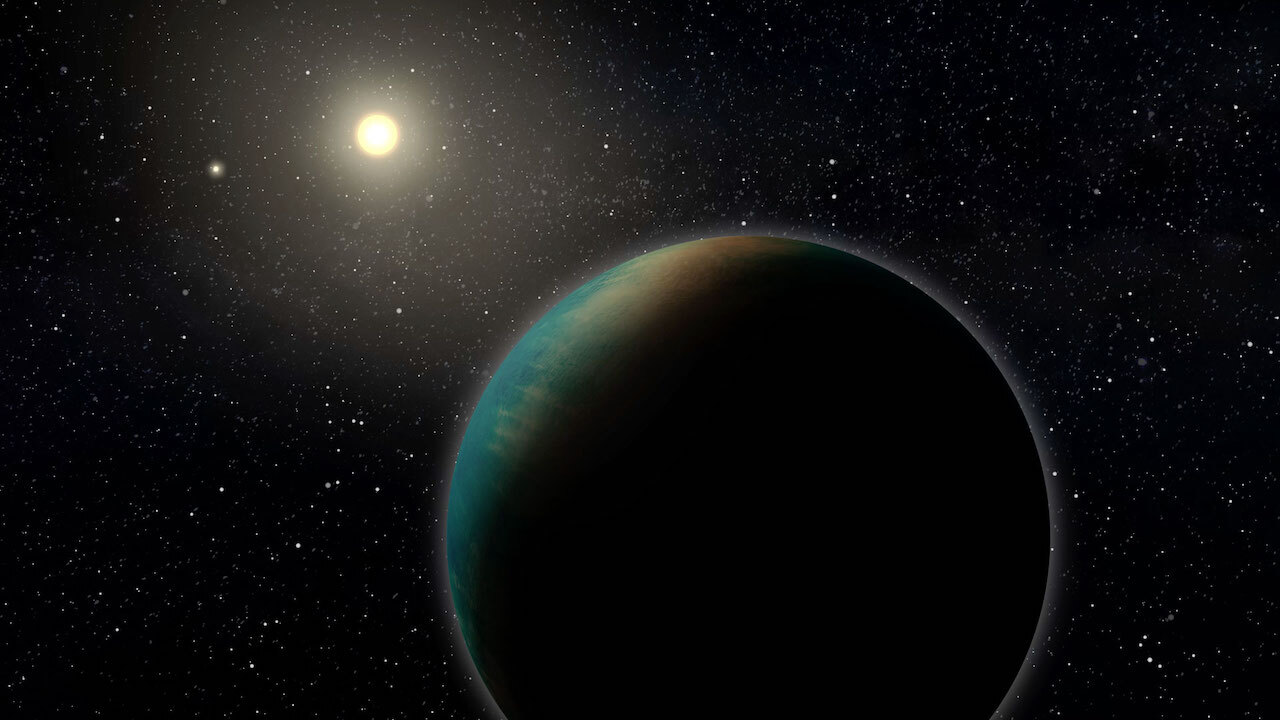An international team of astronomers, led by researchers at the University of Montreal, has discovered a “super-Earth” just 100 light-years from Earth, it reports. exoplanets.nasa.govNASA’s official portal for such discoveries outside our solar system.
Planet TOI-1452 was identified using observations made by NASA’s Transiting Exoplanet Survey Satellite (TESS). The planet is likely rocky like ours, but larger, and orbits a red dwarf star 100 light-years away. Further investigations will shed light on an intriguing possibility: the planet may be a “water world,” according to the cited source.
Water planets have long been discussed but difficult to confirm, and TOI-1452 b is no different. 70% larger than Earth and five times more massive, whose density would be consistent with the existence of a very deep ocean. But more confirmation is needed, the researchers say, because the planet may be a large rock with little or no atmosphere. As analyzes so far suggest, it could even be a rocky outcrop with an atmosphere of hydrogen and helium.
- If the Earth’s surface is 70% water, our blue ocean is less than 1% of the Earth’s mass. A simulation of TOI-1452 b created by computer modelers on the Discovery team is shown Water can represent up to 30% of its massis shown in exoplanets.nasa.gov. In this respect, it would be similar to the water moons of our solar system – Jupiter’s Ganymede and Callisto or Saturn’s Titan, Enceladus – “which are believed to hide deep oceans under ice layers”.
A year in TOI-1452 b is 11 days, the time it takes to make a complete orbit of its star. But because the red dwarf star is smaller and cooler than our Sun, the team of astronomers notes that the planet receives about the same amount of light from its star as Venus does from our Sun.
James Webb placed it “just right” to take the photo
According to the same source, the planet TOI-1452 b is located for further investigation. James Webb Space Telescope, now providing scientific observations from its platform 1.6 million kilometers from Earth. The planet’s 100 light-year distance is, astronomically, very close.
Also Read:
NASA’s James Webb Space Telescope Captures First Evidence of Carbon Dioxide on an Exoplanet
NASA publishes image of Cartwheel galaxy 500 million light-years from Earth
NASA has detailed plans to return rock samples from Mars in 2033. The Perseverance rover has already collected 11 rock samples
Photo For the first time, NASA will publish a set of color photos of the universe today, from the James Webb Space Telescope mission / Their analysis will help us learn about distant galaxies.
NASA has released a special image of the universe taken by the James Webb Space Telescope. A full set of images will appear on Tuesday, July 12
Photo A new planet in a “violent formation” has been photographed by the Hubble Space Telescope, NASA has announced. Researchers believe it is nine times larger than Jupiter
NASA has released a mobile phone app for kids that lets them explore a spacecraft’s instruments using augmented reality. The story behind it
Martian sounds captured by the Perseverance rover have been revealed and analyzed for the first time – audio

Prone to fits of apathy. Unable to type with boxing gloves on. Internet advocate. Avid travel enthusiast. Entrepreneur. Music expert.



